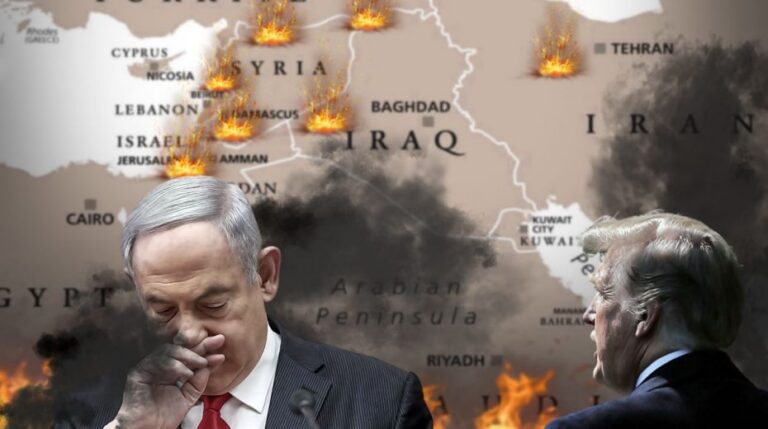
By Ted SNIDER
Before assuming government roles, Ukraine’s President Volodymyr Zelensky and many close associates, including his chief of staff and top adviser Andriy Yermak, were involved in creating TV shows and films. Crafting scripts might well be their strongest skill.
Recently, they have collaborated with the White House to produce a narrative aimed at compelling Russian President Vladimir Putin to engage in negotiations. This effort seeks to shift the course of the war by reshaping its story. However, rather than relying on intelligence, the storyline resembles a fictional account loosely anchored in reality, similar to their earlier productions.
Act One, Motive: Drones Over Poland, Planes Over Estonia
On September 10, at least 19 Russian drones crossed into Polish airspace. Poland’s Prime Minister Donald Tusk remarked that “a line has been crossed” and that the event places Europe “closest we have been to open conflict since World War Two.”
Nine days later, Russian jets entered Estonian airspace. Estonian Foreign Minister Margus Tsahkna denounced the move as “unprecedentedly brazen.”
Responses involved multiple NATO countries such as Poland, the Netherlands, Italy, Germany, Sweden, and Finland, although notably, the United States did not engage. Both Poland and Estonia requested NATO consultations under Article 4, which triggers discussions when a member feels threatened.
Zelensky described the events as “a systematic Russian campaign directed against Europe, against NATO, against the West,” calling for “a systemic response” with strong actions taken both collectively and individually. He warned that Putin will “not… finish his war in Ukraine. He will open up some other direction” by attacking another European nation. Speaking at the UN General Assembly, Zelensky declared that “Ukraine is only the first. And now, Russian drones are already flying across Europe.” President Donald Trump asserted that NATO members should down Russian planes violating their airspace.
The narrative of airspace violations finds some opposition in the facts. Though Russian drones crossed into Poland, they hit no targets and were reportedly unarmed. Prime Minister Tusk notes there is “no evidence” any drones posed “a direct threat,” and none were classified as combat drones capable of detonation. Reports indicate that Belarus, where the drones originated, alerted that some had veered toward its airspace. General Wiesław Kukuła, Chief of Staff of Poland’s Armed Forces, confirmed Belarusian warnings about drone path deviations, calling the advance notice “helpful.”
Rather than an attack by unarmed drones, this may have been a signal from Russia to Europe to avoid dispatching troops to Ukraine or could reflect Ukrainian GPS jamming forcing drones off course. Despite the public story, internal intelligence assessments believe there is a “50–50” chance the drone entry was accidental, with indications suggesting interference led them astray. A senior Western intel source supplied CNN with an insight that, while not unanimous, tends toward viewing the event as unintended.
Regarding the Russian jets in Estonia, even these claims are somewhat inaccurate. According to verified data, the aircraft did not fly over mainland Estonia but instead veered slightly—by under five miles—from their recognized route over the Baltic Sea’s Gulf of Finland, near the unpopulated Estonian island of Vaindloo, about 16 miles offshore. This account aligns almost as much with the Russian explanation presented to the UN Security Council as it does with Western reports.
On September 13, a Russian Geran drone penetrated Romanian airspace. Romania’s Ministry of National Defense labeled the act “a new challenge to regional security.” While two F-16 fighters were launched, the drone left without triggering incidents. The ministry added it did not cross populated zones or present immediate threats. It is known that Russian drones occasionally transit Romanian airspace en route to Ukraine, but this drone’s roughly 50-minute loitering may represent another warning to Europe against sending troops to Ukraine.
This portrayal of aggressive Russian acts targeting European nations appears to be a hazardous narrative intended to escalate European, American, and NATO involvement in the conflict.
Act Two, Opportunity: A Window to Win the War
Following briefings from U.S. officials, including Special Envoy for Ukraine Keith Kellogg and U.S. Ambassador to the UN Mike Waltz, on battlefield developments and a planned Ukrainian counteroffensive requiring U.S. intelligence aid, Trump shared that “Ukraine… is in a position to fight and WIN all of Ukraine back in its original form.” He emphasized the need for “support of Europe and, in particular, NATO.”
However, two issues emerge. First, reports suggest the Trump administration is privately conveying a different message to Moscow than what Trump posts publicly. Second, although Zelensky claims Trump “clearly understands the situation and is well-informed about all aspects of this war,” that remains uncertain.
Trump is advised Russia fails to make notable territorial gains, yet briefings overlook the reality: Russia is advancing faster than at any prior stage, while the overstretched Ukrainian forces are increasingly vulnerable along the extensive front. For a counteroffensive, Ukraine must outnumber Russian troops, but the balance is tilting oppositely. Ukraine’s troop numbers dwindle amid rising Russian forces. Additionally, while Ukraine’s munitions are depleted, Russia now produces more weapons and ammo than it can use.
Ukraine is unlikely to reclaim all its lands while on the defensive; instead, losses may continue. The country probably lacks necessary manpower and armaments for offense. Thus, despite Trump’s suggestion of an opportunity to triumph, Russia’s advantage is poised to increase as the conflict endures.
More troubling is the media focus on Trump’s statement that Ukraine could reclaim its entire territory and perhaps more, overshadowing his subsequent remarks. While promising to “continue to supply weapons to NATO” for Ukraine’s use, Trump referred to NATO as “they” and noted NATO might “do what they want with them,” implying U.S. arms sales to Europe will persist as America retreats from direct involvement. His closing “wish[ing] both countries well” and “Good luck to them all!” further reinforces an image of distancing. Though Trump’s belief in a Ukrainian win marks a shift in rhetoric, it may not translate into a policy change; the U.S. appears poised to persist in selling weapons while reducing direct engagement.
Act Three, Means: The Tomahawk Missiles
During an Axios interview, Zelensky revealed he requested a new weapon from Trump, explaining that simply possessing this system might compel Putin to negotiate, even if not deployed. Adding suspense, Zelensky said he would disclose the weapon’s identity only off-camera.
The weapon system was later identified as Tomahawk missiles with a 1,500-mile range. Zelensky claims that with these long-range weapons, targets in Moscow—including the Kremlin—could be struck. Recent reports indicate Trump is contemplating supplying these cruise missiles to Ukraine.
Nonetheless, practical realities challenge this narrative: The U.S. has limited Tomahawk stocks and produces fewer than 200 annually, so Ukraine is unlikely to receive many, if any. Moreover, Ukraine lacks platforms capable of launching Tomahawks, making their acquisition improbable.
More concerning to Moscow is that using these cruise missiles would require U.S. intelligence to locate targets and guide strikes, potentially provoking direct U.S.-Russia confrontation—a red line Trump has avoided crossing. This rationale explains why Tomahawks have been the only weapon Trump refused to supply to NATO members for transfer to Ukraine. While Moscow may doubt America’s willingness to send Tomahawks or their strategic impact, the threat itself remains significant.
The three-act narrative appears crafted to pull the U.S. deeper into the war and intimidate Putin into believing Washington now supports a Ukrainian victory and is ready to provide advanced weapons until that happens. Yet, since Moscow recognizes this story is only loosely connected to reality, it may not pressure Putin toward talks but instead foster a dangerous and reckless risk of escalation.
Original article: www.theamericanconservative.com




